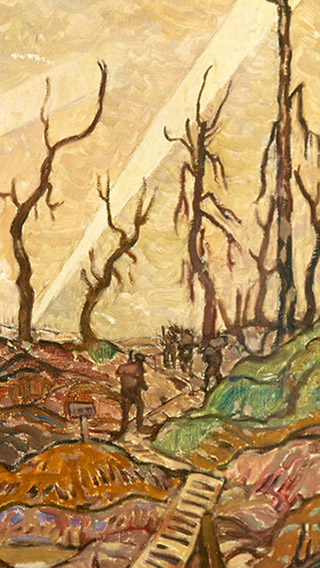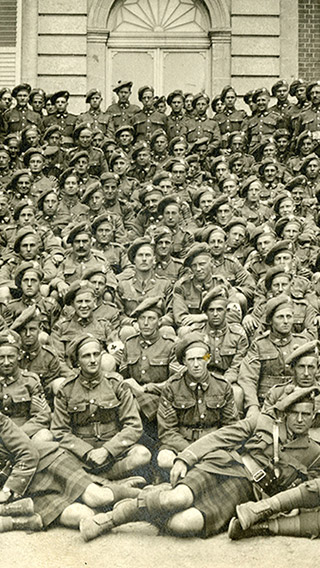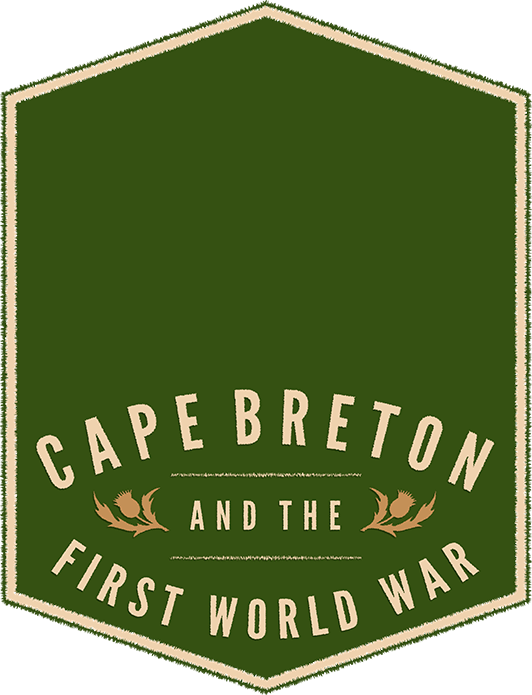Home

The First World War, 1914-1918, radically altered the lives and landscapes of the twentieth century, sending shockwaves of fear, pride, and grief across the globe.
The war had far-reaching impacts in even the smallest corners of the world. Cape Breton Island, on the east coast of Canada, was no exception.
A copse, Evening, 1918. A.Y. Jackson. Canadian War Museum.

Cape Breton’s contributions to the war effort were significant, both at home and abroad.
As an island in the North Atlantic, Cape Breton was strategically located at the time of Canada's call to service.
Section of a map showing European countries
with Canada's Atlantic coastline, 1914.

Cape Breton’s proximity to Europe, large harbour in Sydney, and established coal and steel industries all served the conflict overseas, but it was the people who formed the core of the Island's involvement in the war.
Convoys in Sydney Harbour, ca. 1917.

Cape Bretoners who served in the First World War included immigrants who came to work in coal and steel, Indigenous and Black Nova Scotian volunteers, miners who worked in tunnelling companies, and women who worked in military hospitals treating the sick and wounded.
85th battalion (Nova Scotia highlanders) in Lozinghem, France, July 1918.

Learn about Canada’s involvement in the war through four personal accounts and interactive resources that tell the stories of the men and women involved in the global conflict that shaped the twentieth century.
Discover these lives and stories of Cape Breton and the First World War.
Standard Map of the Island of Cape Breton, 1903.

Follow a nursing sister and anaesthetist from Sydney through her work with the Canadian Army Medical Corps overseas.
Gangréne Gazeuse, 1917. Katharine McLennan. Cape Breton Regional Library.

Explore life as a tunneller in England and France with a coal miner from Donkin.
Canadians coming out of Boche tunnel on the outskirts of Lens, September, 1917.
Library and Archives Canada.

Learn the story of a student turned Lieutenant from North East Margaree, wounded at Vimy Ridge.
Vale of Margaree, 1904. Louise McLennan.

Experience the heartbreaking journey of a Polish immigrant to Cape Breton who died a prisoner of war in Germany.
Friedrichsfeld Prisoner of War Camp, Germany, ca. 1915.

